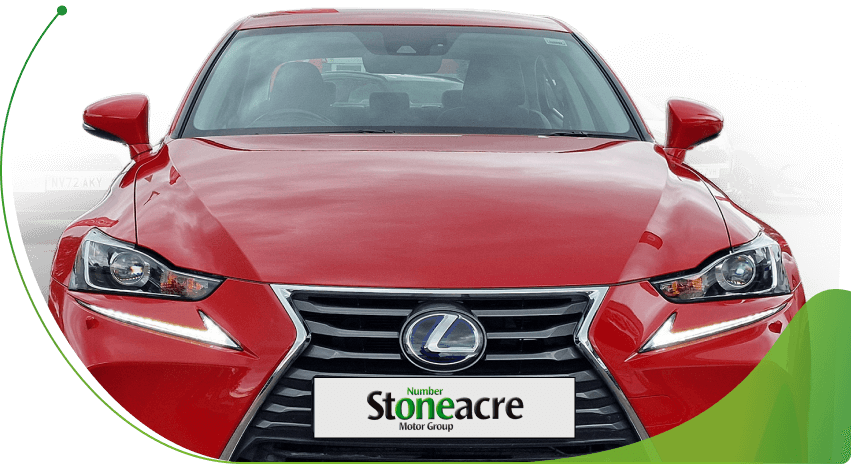
Negative equity car finance is something that can catch people when looking for a new car, leaving them without value in their existing vehicle when they try to change.
There are ways in which you can ensure this doesn't happen, however, and even if it does, there are financially viable ways to handle the situation.

What is negative equity on a car?
In pure black and white, negative equity on a car is where the outstanding finance is more than the current value of the car.
For example, if the outstanding finance on your car is £5,000, but your vehicle is only worth £4,000, you would have £1,000 of negative equity.
Negative equity on a car can often be problematic, and it’s important to know exactly how it positions you as a consumer when looking to buy a new car, and swap your old one.


Why am I in negative equity?
Negative equity only really comes into the fray when you are looking to change cars, otherwise you would just keep paying the finance on your current car, and it wouldn't be an issue.
A typical example of where negative equity becomes apparent in the realms of car finance is where personal circumstances may have changed quickly, and you need to switch cars.
However, you are in a situation where you haven’t paid enough of the finance off to be in positive equity, and the remaining finance is larger than that of the car’s value.
It could also be that you have had an accident in your car, and the insurance company will only cover the current value of the car, which is lower than that of the existing finance costs.
How to avoid negative equity on a car
There are a few ways to avoid car finance with negative equity:
Put down a large deposit: This will give you a head-start when it comes to paying off your agreement.
Make higher payments: If you can afford higher payments, and you’re keen on car ownership, choose Hire Purchase (HP) over Personal Contract Purchase (PCP) - this will help pay off the finance quicker.
Choose a car that holds value: Be wary of which car you choose, and look for ones that hold their value. Some cars depreciate quickly and have more influence in lowering the value of your vehicle over time.
HP vs PCP Car in Negative Equity
The chances of negative equity can increase or decrease, depending on the type of finance you choose.
With Hire Purchase (HP), you will have a higher chance of avoiding negative equity. This is due to the fact that the fixed fee you pay is towards the full value of the car; therefore, you will be paying off the finance more quickly, helping to close the gap between the outstanding finance and the vehicle’s value.
With Personal Contract Purchase (PCP), having much of the car’s value in a large optional final payment, your monthly payments tend to be lower. As a result, you pay off the finance at a slower rate, and it takes longer to close the gap between the outstanding finance and your car’s value.


How to get out of negative equity car finance
If you find yourself in negative equity, and want a way to get out of it - whether you're looking to change car or not - here are a few options:
Stick with your current deal: If you’re in a position to keep paying the finance on your current car, and you have no need to change vehicles, then you can keep going with your current deal. Once you pay off enough of the finance, you’ll likely find yourself in positive equity, and changing cars will be easier.
Pay off the negative equity: For those able to clear the outstanding finance completely, and take full ownership of the car, this can put you in a very healthy position. Once the balance has cleared, you’ll be able to look into getting a new car with a clean slate and a car whose full value you can take advantage of when part exchanging.
Have the negative equity roll over: If you're comfortable in doing so, and you can afford the payments, you can have any negative equity rolled over into a new deal on your next car - just remember that, in this scenario, you'd be borrowing more than the value of your new car.
Request a voluntary termination: It might be that you'd rather end your current agreement and walk away. If so, you’ll need to have paid off at least half of your agreement before considering this step. If you believe you’re at this point, then you’ll need to start a dialogue with your finance company to see how they view the situation and go from there.
Representative Example
This represents an average of the deals that our customers receive on other vehicles
We are a credit broker and a lender. We can introduce you to a limited number of lenders and their finance products. We will provide details of products available, but no advice or recommendation will be made. You must decide whether the finance product is right for you. We do not charge you a fee for our services. Lenders will pay commission to us (either a fixed fee or a fixed percentage of the amount you borrow) for introducing you to them, this may be calculated in reference to a variable factor such as (but not limited to) the vehicle age, your credit score and the amount you are borrowing. Different lenders may pay different commissions for such introductions. Offers available to everyone over the age of 18, subject to credit approval.



